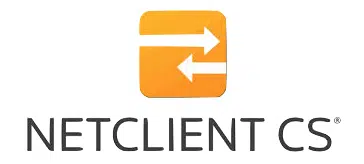Healthy savings: How tax-smart HSAs can benefit your small business and employees
January 2, 2025

As a small business owner, managing health care costs for yourself and your employees can be challenging. One effective tool to consider adding is a Health Savings Account (HSA). HSAs offer a range of benefits that can help you save on health care expenses while providing valuable tax advantages. You may already have an HSA. It’s a good time to review how these accounts work because the IRS has announced the relevant inflation-adjusted amounts for 2025.
HSA basics
For eligible individuals, HSAs offer a tax-advantaged way to set aside funds (or have their employers do so) to meet future medical needs. Employees can’t be enrolled in Medicare or claimed on someone else’s tax return.
Here are the key tax benefits:
- Contributions that participants make to an HSA are deductible, within limits.
- Contributions that employers make aren’t taxed to participants.
- Earnings on the funds within an HSA aren’t taxed so the money can accumulate tax-free year after year.
- HSA distributions to cover qualified medical expenses aren’t taxed.
- Employers don’t have to pay payroll taxes on HSA contributions made by employees through payroll deductions.
Key 2024 and 2025 amounts
To be eligible for an HSA, an individual must be covered by a “high-deductible health plan.” For 2024, a high-deductible health plan has an annual deductible of at least $1,600 for self-only coverage or at least $3,200 for family coverage. For 2025, these amounts are $1,650 and $3,300, respectively.
For self-only coverage, the 2024 limit on deductible contributions is $4,150. For family coverage, the 2024 limit on deductible contributions is $8,300. For 2025, these amounts are increasing to $4,300 and $8,550, respectively. Additionally, for 2024, annual out-of-pocket expenses for covered benefits can’t exceed $8,050 for self-only coverage or $16,100 for family coverage. For 2025, these amounts are increasing to $8,300 and $16,600.
An individual (and the individual’s covered spouse, as well) who has reached age 55 before the close of the tax year (and is an eligible HSA contributor) may make additional “catch-up” contributions for 2024 and 2025 of up to $1,000.
Making contributions for your employees
If an employer contributes to the HSA of an eligible individual, the employer’s contribution is treated as employer-provided coverage for medical expenses under an accident or health plan. It is excludable from an employee’s gross income up to the deduction limitation. There’s no “use-it-or-lose-it” provision, so funds can build for years. An employer that decides to make contributions on its employees’ behalf must generally make similar contributions to the HSAs of all comparable participating employees for that calendar year. If the employer doesn’t make similar contributions, the employer is subject to a 35% tax on the aggregate amount contributed by the employer to HSAs for that period.
Using funds to pay medical expenses
Your employees can take HSA distributions to pay for qualified medical expenses. This generally means expenses that would qualify for the medical expense itemized deduction. They include costs for doctors’ visits, prescriptions, chiropractic care and premiums for long-term care insurance.
The withdrawal is taxable if funds are withdrawn from the HSA for any other reason. Additionally, an extra 20% tax will apply to the withdrawal unless it’s made after age 65 or in the case of death or disability.
As you can see, HSAs offer a flexible option for providing health care coverage, but the rules are somewhat complex. Contact us with questions or if you’d like to discuss offering this benefit to your employees.
© 2024
LINKEDIN/FACEBOOK IMAGE POST (STAND-ALONE POST TO USE WITHOUT A LINK):
As a small business owner, managing health care costs for yourself and your employees is challenging. So you may want to provide some benefits through an employer-sponsored Health Savings Account (HSA). For eligible individuals, HSAs are a tax-advantaged way to set aside funds (or have their employers do so) to meet medical needs. An eligible employee must be covered by a “high deductible health plan.” For 2025, a high-deductible health plan has an annual deductible of at least $1,650 for self-only coverage, or $3,300 for family coverage. For self-only coverage, the 2025 limit on deductible contributions is $4,300. For family coverage, the 2025 limit on deductible contributions is $8,550.
LINKEDIN/FACEBOOK LINK POST (TO USE WITH A LINK TO THE FULL ARTICLE):
Health Savings Accounts allow you and your employees to set aside money on a pre-tax basis to pay for qualified medical expenses. Here’s a look at what an HSA could mean for your business, as well as the inflation-adjusted amounts for 2024 and 2025.
Click here to access the image to accompany any of the posts above. Typically, you won’t need to use the image in the post if you are linking to the full article and the image.





